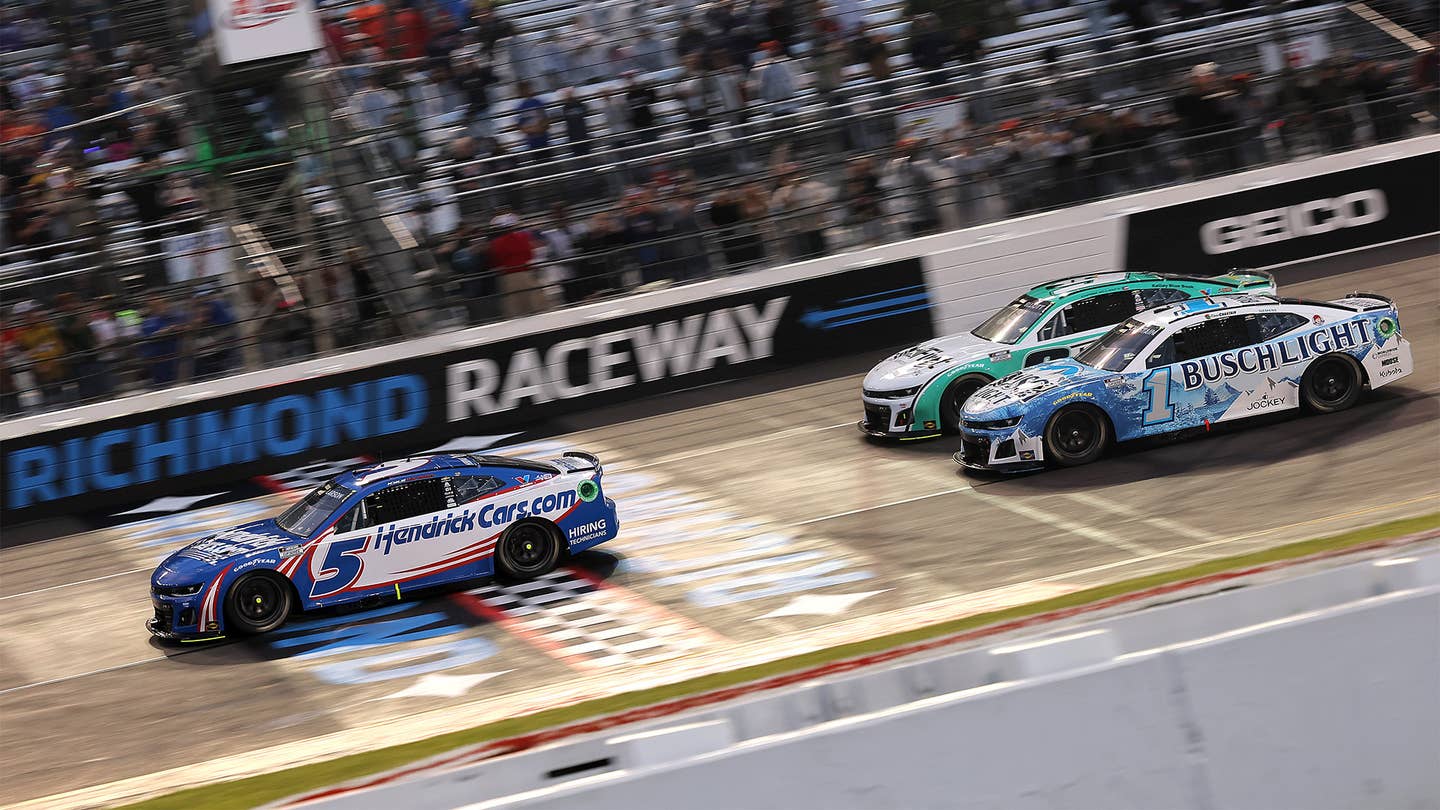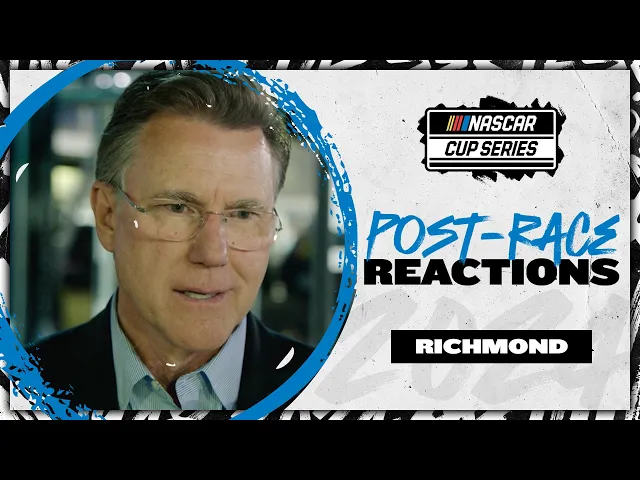The Cup Series ran grooved Goodyears and it was a big success, safely putting cars on the track and avoiding an hours-long weather delay.

Racing in the rain is an art, or so they say. NASCAR Cup Series drivers found that out for themselves on Sunday as they started the contest at Richmond Raceway on wet-weather tires. This marked a first in a points-paying Cup race, and by all reasonable measures, it was a success. NASCAR, Goodyear, and the fans were all pretty happy about that as the race started nearly on time and there were no accidents to speak of—a win-win, then.
The entire 36-car field ran the we- weather tires for the first 30 of 400 laps around the short oval before NASCAR called a competition caution. From then on, they ran slicks. Conditions were admittedly mild, as the storm had cleared up a little while before the green flag flew. There were no windshield wipers, mud flaps, or rear visibility lights on the cars, but tossing on the grooved Goodyears allowed the event to get underway with just a 15-minute delay. That’s a crucial bit of time, considering Denny Hamlin took the checkered flag at nearly 11 p.m. ET. It could have been Monday morning before the race ended, had they waited for the track to dry.
Chris Graythen/Getty Images
“Unlike road courses where pit road is wet, and we’d allow the teams to make the decisions whether to put dries or wets on (the car), on the short ovals, we’re still not to a place where we feel comfortable doing that,” said Elton Sawyer, NASCAR’s senior vice president of competition. “We’re looking out for the safety. This is only our third event that we’ve actually run wet-weather tires; we ran the trucks at Martinsville last year, [and] obviously [North] Wilkesboro. So, we have another data point.
“That’s one thing we want to work hard on. We want to be able to start the race, put all the competition in the team’s hands, the strategy when to put tires on, when to take them off and the sanctioning body not be in the middle of that decision making. I think we’ll get there sooner than later, but all in all, just a huge success and credit to Goodyear and all of our folks at the R&D Center, and obviously Mr. [Jim] France’s vision to get us here.”

Driver reactions to the wet tires were generally positive, and similar to what we saw with the drastic drop-off at Bristol a couple of weeks ago, they created another layer of difficulty. Kyle Busch, who finished 20th in his No. 8 Chevy Camaro ZL1, said after the race that he had “zero grip on the initial fire off.” It’s not like this compound is some cheat code; it simply allows cars to hit the track in conditions they couldn’t race in previously.
We may or may not see the wet tires make another appearance this year, but it’s good to see that it’s working out. It’ll have to be on a short oval as NASCAR still hasn’t given the green light on damp superspeedway races, which is surely for the better. Whatever gets drivers in their cars in a safe manner is what everybody wants to see.
Got a tip or question for the author? Contact them directly: caleb@thedrive.com


